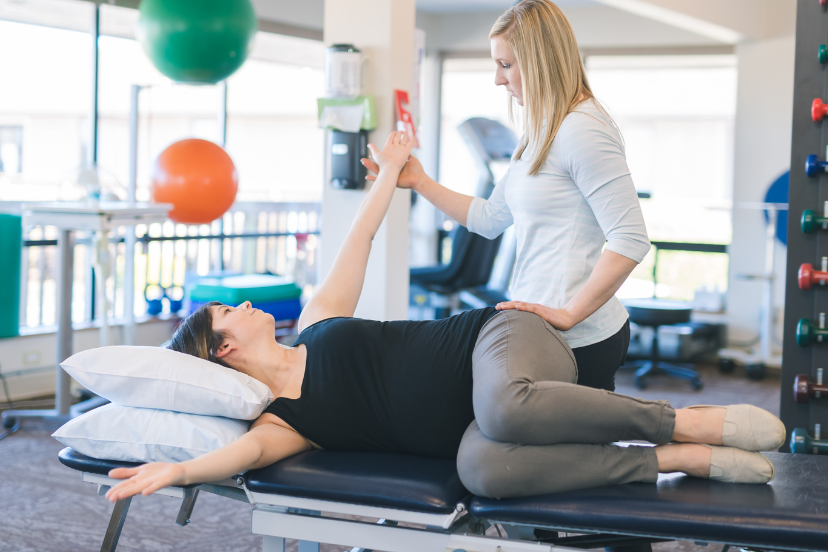Osteoporosis Exercises: The Right Moves that Work
In a world where staying active and healthy is a top priority, it’s crucial to understand how exercise can significantly impact conditions like osteoporosis. Osteoporosis exercises offer a natural way to strengthen your bones and improve your overall well-being. Let’s delve into the world of bone health, exploring effective exercises, answering FAQs, and guiding you towards a healthier future.
Understanding Osteoporosis
Before we dive into the exercises, let’s grasp the basics. What is osteoporosis, and why does it matter?
Osteoporosis is a medical condition where your bones become fragile and prone to fractures. This happens when your bone density decreases over time, making your bones weaker. Think of your bones like a skyscraper – with osteoporosis, they start losing floors, becoming more vulnerable to even minor bumps and falls.
What Causes Osteoporosis?
The causes of osteoporosis are multifaceted, and they include:
- Aging: As we get older, our bone density naturally decreases.
- Hormonal Changes: Women going through menopause often experience a significant drop in bone density.
- Lifestyle Factors: Smoking, excessive alcohol consumption, and a sedentary lifestyle can increase your risk.
- Nutritional Deficiencies: Inadequate intake of calcium and vitamin D plays a role.
Now that we’ve got the basics covered, let’s move on to the main event: osteoporosis exercises.
Osteoporosis Exercises: The Foundation for Strong Bones
Building strong bones through exercise is an achievable goal. These osteoporosis exercises not only help maintain bone density but also enhance overall health. Remember, it’s never too late to start!
1. Weight-Bearing Exercises
Weight-bearing exercises involve working against gravity while staying on your feet. They are the gold standard for bone health.
- Brisk Walking: Take a stroll around your neighborhood, aiming for at least 30 minutes a day.
- Jogging: If your fitness level allows, jogging can be an excellent option.
- Dancing: Whether it’s ballroom, Zumba, or ballet, dancing keeps your bones engaged.
2. Resistance Training
Resistance training helps build muscle and bone strength. It involves using weights, resistance bands, or your body weight.
- Squats: This classic exercise targets your leg muscles and bones.
- Lunges: Strengthen your lower body and improve balance with lunges.
- Push-Ups: They engage the upper body and are great for bone health.
3. Yoga and Pilates
These exercises focus on balance, flexibility, and strength – all essential for bone health.
- Tree Pose: In yoga, the tree pose improves balance and strengthens your leg bones.
- Pilates Leg Circles: These target your hip and thigh muscles, supporting your bones.
4. Aerobic Exercises
Aerobic exercises get your heart pumping and bones working.
- Cycling: Both stationary and outdoor cycling can be beneficial.
- Swimming: While not weight-bearing, swimming is gentle on joints and still beneficial for overall fitness.
5. Functional Movements
Functional movements mimic daily activities and help improve bone density through practical exercises.
- Stair Climbing: Going up and down stairs is an excellent way to engage your leg bones.
- Gardening: Digging and planting can be a fun way to strengthen your bones.
6. Balance Exercises
Enhancing balance is crucial for preventing falls, which can lead to fractures.
- Standing on One Leg: Simple yet effective, this exercise boosts your balance.
- Tai Chi: This martial art combines graceful movements and balance training.
7. Core Strengthening
A strong core supports your overall posture and balance.
- Planks: Hold a plank position to engage your core muscles.
- Leg Raises: These exercises work on your lower abdominal muscles.
Frequently Asked Questions (FAQs)
Now, let’s address some common queries about osteoporosis exercises.
FAQ 1: Can exercise really help with osteoporosis?
Absolutely. Weight-bearing and resistance exercises can improve bone density, enhance muscle strength, and reduce the risk of fractures.
FAQ 2: How often should I exercise?
Aim for at least 150 minutes of moderate-intensity aerobic activity or 75 minutes of vigorous-intensity aerobic activity each week. Additionally, include muscle-strengthening activities on two or more days.
FAQ 3: Are there exercises to avoid if I have osteoporosis?
High-impact activities like jumping or running can be risky. Consult your healthcare provider for personalized recommendations.
FAQ 4: Can I do these exercises at home?
Absolutely! Many osteoporosis exercises can be done at home with minimal equipment. It’s all about finding what works for you.
FAQ 5: How long does it take to see results?
Consistency is key. With regular exercise, you can expect to see improvements in bone density and strength within a few months.
FAQ 6: Can I start exercising if I already have osteoporosis?
Yes, it’s never too late to start. However, it’s crucial to consult your healthcare provider to develop a safe and effective exercise plan.
Conclusion: Building Strong Bones for Life
Osteoporosis is a condition that demands attention, and exercise is your ally in this battle. By incorporating a variety of osteoporosis exercises into your daily routine, you can strengthen your bones, improve balance, and reduce the risk of fractures. Remember, it’s a journey, and the path to strong bones begins with that first step. So, lace up your sneakers, roll out your yoga mat, or grab those resistance bands – your bones will thank you in the long run. Start today and build a healthier, happier tomorrow!




